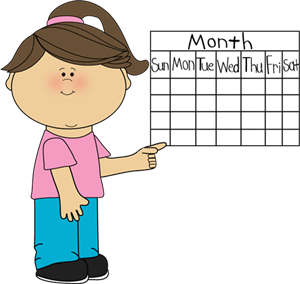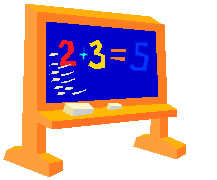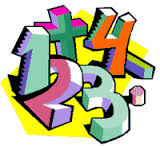-

Calendar Math- Through daily calendar activities, students are able to learn and reinforce math concepts such as identifying patterns, counting, identifying numbers, developing number sense, skip counting, beginning place value, and data collection (just to name a few). Through the discussion of mathematical thinking, students are able to verbalize how they arrived at an answer and show a deeper understanding of mathematical theory.
First Grade Math November/DecemberIn math we are currently learning and gaining a better understanding of addition and subtraction. We are learning that the definition of addition is putting two parts together to get a total or a (sum). We are learning that the definition of subtraction is starting with a total and taking away a part in order to find the part that is left. We have been solving addition and subtraction problems using objects or pictures and are writing our own addition and subtraction stories.
November/DecemberIn math we are currently learning and gaining a better understanding of addition and subtraction. We are learning that the definition of addition is putting two parts together to get a total or a (sum). We are learning that the definition of subtraction is starting with a total and taking away a part in order to find the part that is left. We have been solving addition and subtraction problems using objects or pictures and are writing our own addition and subtraction stories.In this unit, the students will also gain knowledge of subtraction by solving a variety of problems using pictures and manipulative, counting backwards by 1, 2, or 3, and beginning to understand the relationship between addition and subtraction.
We will end this unit by challenging ourselves with some word problems. When solving word problems your child will have to demonstrate that they understand how to apply the concepts of addition and subtraction in real world contexts. These are are the steps we follow when solving a first grade math problem.
- Decide if it is addition or subtraction (look for clue words like “in all” for addition or “were left” for subtraction).
- Write a number sentence to match the problem.
- Solve the problem.
- Double check
Please make sure to work with your child on his/her homework. In addition you can practice counting by 2’s, 5’s and 10’s, telling addition and subtraction number stories, practicing double facts, and exploring with the hundreds chart. Have fun!
Second Grade Math November/December
November/DecemberWe are currently in the number sense unit. This unit provides students with the opportunity to develop a sense of whole numbers (up to and including 20) and to represent and use them in a variety of ways, including relating, composing, and decomposing numbers. The students will develop and use a variety of addition and subtraction strategies for basic number combinations which become the foundation for higher level understanding of the basic operations in mathematics. The students will apply the relationships about whole numbers and the addition and subtraction strategies they learned to problems involving patterns and algebraic thinking. This number sense unit will also provide the students with the opportunity to count and perform simple operations using money. At the conclusion of this unit, students will have developed a conceptual understanding of place value concepts for two,three and four digit numbers.
Vocabulary
Addends – The numbers used in an addition problem
Sum – The answer to an addition problem
Addition Facts– An addition sentence that tells the sum
Difference– The answer to a subtraction problem
Even Numbers– Numbers that you name when you skip count by two’s. Even numbers are numbers that can be formed by making a pair (2, 4, 6, 8, 10, 12, 15, etc.)
Odd Numbers– Numbers that always have a left over when making a pair. (1, 3, 5, 7, 9, 11, 13)
Ordinal Numbers– An ordinal number can beused to tell you the position of people or things that are in order.
Variable – A symbol (usually a letter) that represents a number.
- Decide if it is addition or subtraction (look for clue words like “in all” for addition or “were left” for subtraction).
Select a School...
Select a School
- Burnet Hill Elementary School
- Collins Elementary School
- Harrison Elementary School
- Hillside Elementary School
- Mt. Pleasant Elementary School
- Riker Hill Elementary School
- Mt. Pleasant Middle School
- Heritage Middle School
- Livingston High School
- Livingston Education Foundation
- COVID-19 Advisory Information

